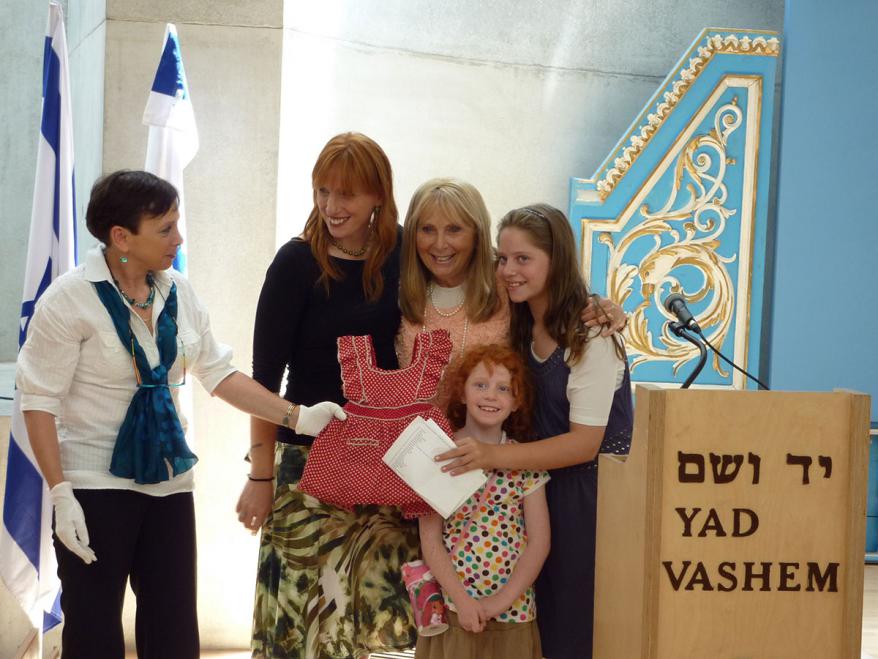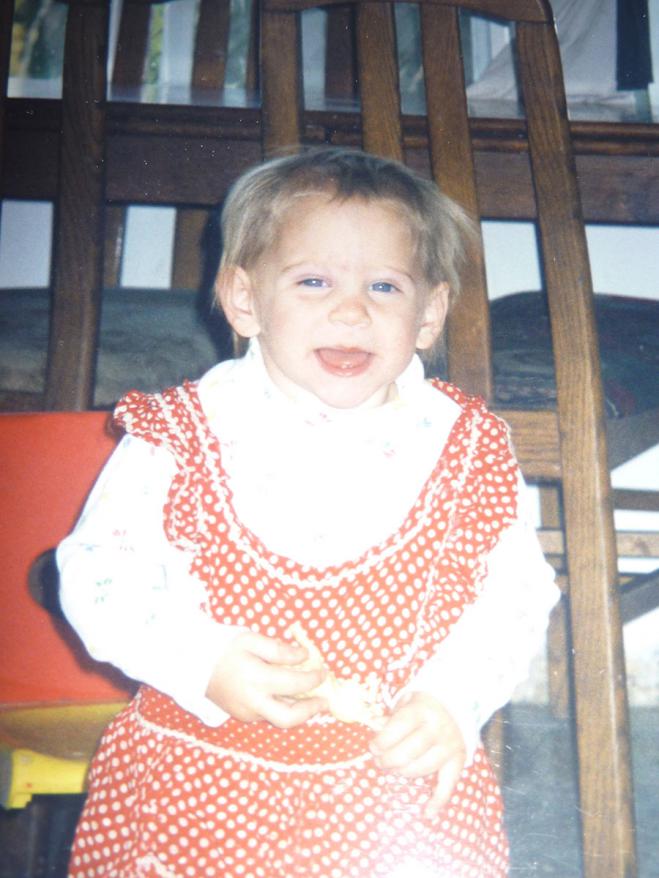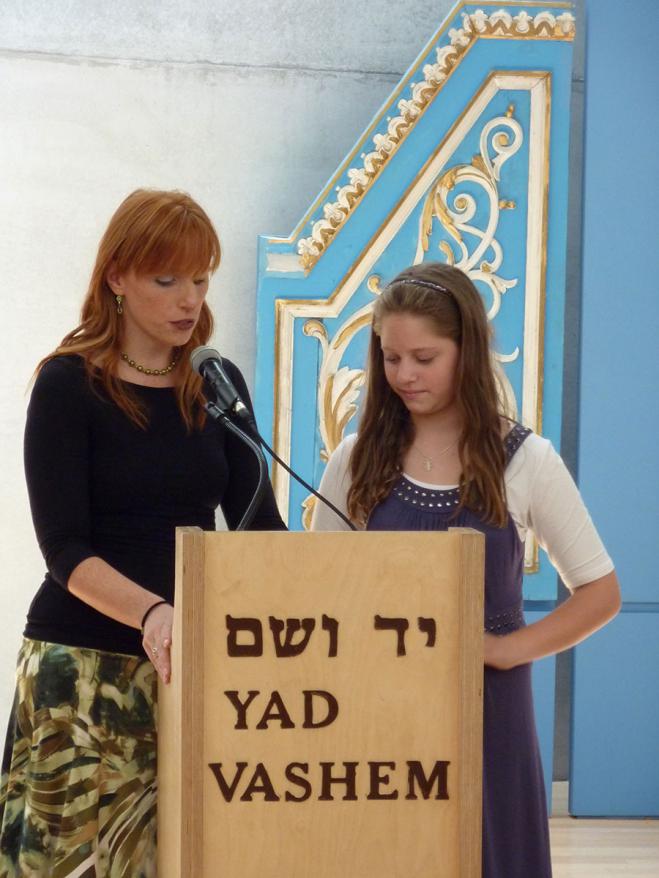





Over the years, Yad Vashem has been dedicated to both commemora ting those that were murdered in the Shoah, as well as educating future generations throughout Israel and the world about what took place. One of the programs that Yad Vashem has recently developed in this vein is the Bar/Bat Mitzvah program.
A few weeks ago, I was privileged to witness a very special Bat Mitzvah ceremony at the Yad Vashem Synagogue. Twelve-year-old Emma Berman not only participated in Yad Vashem’s Bat Mitzvah Twinning program, but Emma, her mother, and grandmother, also donated a very special artifact to Yad Vashem’s Senior Artifacts Curator, Haviva Peled-Carmeli. This special artifact is a dress that belonged to both Emma’s grandmother during the war and Emma as a little girl – a dress that has since witnessed both suffering and happiness.
Emma’s great-grandmother, Emma Salgo nee Steinberg, whom she is named after, was born to a family of 7 in Balmazuvarois, Hungary on February 20, 1914. She later married Haim Salgo and started a family of her own. Haim and Emma then moved to Budapest where their two children, Robbi and Shoshana were born.
The Salgo family lived peacefully in Budapest until 1944, when the Germans invaded Hungary. While Haim was able to escape to Switzerland and the two children were hidden in Budapest, Emma was taken to the Kaufering labor camp, a sub camp of Dachau, in Germany in November 1944.
Emma managed to keep one of her daughter’s dresses throughout the entire period she was interred at Kaufering. This red dress continuously provided Emma with strength and a glimmer of hope that her living nightmare would end and she would one day return to her family.
With the dress still in her possession, Emma was finally liberated from Dachau at the end of the war. When she returned to Budapest she found that though many members of her extended family had been murdered, her entire nuclear family had in fact miraculously survived.
During the moving Bat Mitzvah ceremony recently Yad Vashem, Emma also spoke about Emma Vadnai, a young girl from Hungary murdered by the Nazis, who she was twinned with to mark the occasion. At the conclusion of the event, Emma and her mother, Debbie Berman (a project Coordinator for Yad Vashem's Shoah Victims' Names Recovery Project), donated the little dress to Yad Vashem.
One of the most magnificent displays during the ceremony was a slideshow that played in the background while Debbie spoke. At the end of the slideshow there was a picture of Emma’s grandmother as a little girl and then a picture of Emma Berman wearing her grandmother's dress.
Debbie explained, “Many years later, before I moved to Israel, my mother gave me her little red dress, which I have kept all these years. When my daughter Emma was a baby I dressed her in the dress.
“Only when I saw [Emma] playing and smiling while wearing the dress did I realize how much pain my grandmother must have been in all those months away from her little baby,” said Berman.
Berman convinced her mother to donate the dress to Yad Vashem as she realized that the dress was starting to fall apart.
“In honor of the Bat Mitzvah, my mother, Emma and I, donated the dress […] it was very moving for all of us and I felt we did the right thing,” said Berman. “The story of Emma Salgo and her baby’s red dress is our family’s private story, but it also belongs to the Jewish people. Now the dress and the story will be preserved here at Yad Vashem for generations to come.”










